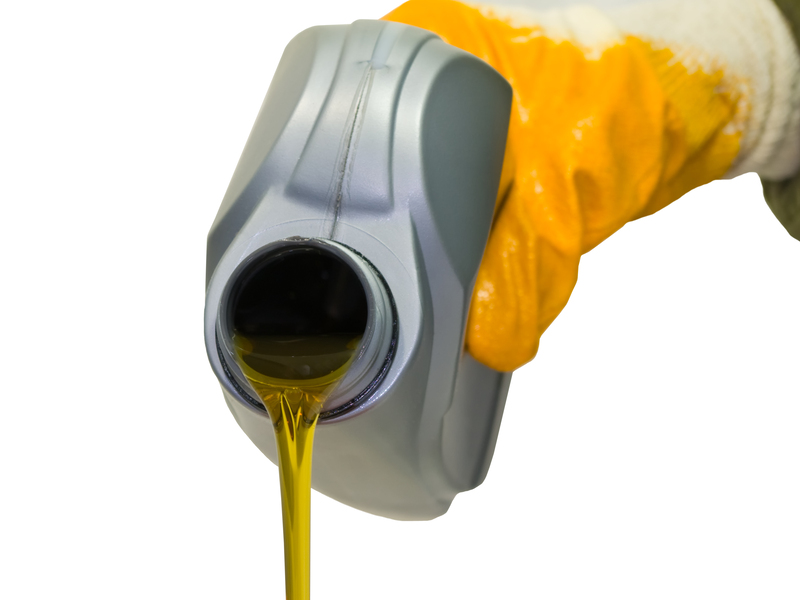Best Practices for PPE Waste Management You Should Know
In today's health-conscious and safety-oriented world, the use of Personal Protective Equipment (PPE) has surged across various sectors--healthcare, manufacturing, hospitality, and even everyday public life. Items like masks, gloves, face shields, and gowns have become an essential part of our lives, especially since the COVID-19 pandemic. However, the dramatic rise in PPE usage has resulted in an equally significant increase in PPE waste, leading to environmental, health, and operational challenges. To tackle these challenges efficiently, understanding the best practices for PPE waste management is more vital than ever.
Why Is PPE Waste Management So Important?
The improper disposal of PPE can have far-reaching consequences:
- Environmental hazards: PPE, often made of plastics or other non-biodegradable materials, can pollute lands and oceans for years.
- Health risks: Contaminated PPE exposes sanitation and waste management workers to infectious agents.
- Legal compliance: Businesses and organizations face significant legal consequences if they fail to manage hazardous waste responsibly.
- Reputational impact: Sustainability and eco-consciousness are increasingly scrutinized by clients, customers, and regulators.
Adhering to the best practices in PPE waste handling and disposal is not just a regulatory requirement; it is a civic responsibility.

Types of PPE Waste and Their Challenges
PPE waste comes in multiple forms, each with distinct characteristics and disposal needs:
- Masks (surgical, N95, cloth)
- Gloves (latex, nitrile, vinyl, plastic)
- Face shields and goggles
- Gowns and aprons
- Shoe covers and head covers
- Combined PPE kits
PPE waste is often classified as:
- Hazardous waste - Used in healthcare or contaminated settings, potentially carrying infectious agents.
- Non-hazardous waste - Used in non-medical or non-contaminated environments.
Effective PPE waste management combines safety, efficiency, and environmental care for both types.
Best Practices for PPE Waste Management: A Step-by-Step Guide
1. Segregate PPE Waste at the Source
Segregation is the foundation of responsible PPE disposal. Always separate PPE waste from general waste to prevent cross-contamination and to facilitate further processing. Implement a color-coded bin system:
- Yellow bins: For clinical or infectious PPE waste
- Red bins: For hazardous or contaminated waste
- Blue or green bins: For recyclable or non-contaminated PPE
2. Use Appropriate Collection and Storage Solutions
Best practices in PPE waste management recommend using leak-proof, puncture-resistant containers for collection and temporary storage. Key points include:
- Securely close and seal containers when full
- Store in well-ventilated and isolated locations
- Regularly disinfect bin surfaces to prevent secondary contamination
3. Train Staff and Implement Standard Protocols
Staff training is crucial for successful PPE waste segregation and disposal. Organize workshops or regular briefings that cover:
- Types of PPE waste and their respective disposal methods
- Segregation procedures and waste bin color codes
- Emergency protocols for spills or accidental exposure
4. Follow Local and National PPE Disposal Regulations
Regulations vary depending on your jurisdiction. Many countries have strict PPE waste management laws for infectious or hazardous waste, including requirement for incineration, autoclaving, or certain types of landfilling.
- Consult your local environmental or health authority's guidelines
- Maintain documentation and compliance records as needed
- Use only authorized waste management service providers
5. Promote the Use of Recyclable and Biodegradable PPE
The market now offers a variety of eco-friendly PPE alternatives. Switching to recyclable or biodegradable PPE can significantly reduce your organization's environmental footprint.
- Choose PPE items made from recyclable plastics or biodegradable materials
- Partner with recycling facilities experienced in handling PPE waste
- Encourage suppliers to innovate towards greener PPE
6. Ensure Regular Collection and Safe Transportation
Timely collection of PPE waste minimizes risk of infection and ensures compliance. Best practices include:
- Setting clear waste collection schedules (daily or as per volume)
- Using labeled, dedicated vehicles for transport
- Training drivers in handling and emergency response
7. Treat and Dispose of PPE Waste Properly
The method of final disposal depends on the contamination level:
- Incineration: The gold standard for contaminated PPE from healthcare and laboratories
- Autoclaving: Steam sterilization renders infectious PPE safe for further handling
- Landfilling: For non-infectious, non-recyclable waste--should be in compliance with hazardous waste standards
- Recycling: Where possible, non-infectious PPE like masks and some gloves can be recycled through specialist programs
8. Raise Awareness and Foster a Safety Culture
Employees and users play a decisive role in responsible PPE disposal. Running awareness campaigns, putting up signage, and rewarding best practices can deeply ingrain proper PPE waste management in your organizational culture.
- Display posters on correct PPE disposal in workspaces
- Incorporate PPE waste management in induction training
- Involve staff in reviewing and improving waste management procedures
Environmental Impact and the Role of Sustainable PPE Waste Management
The United Nations has warned of a "tsunami" of medical waste generated by COVID-19. A significant part of this is disposable PPE. Adopting the right PPE waste management strategies not only protects human health but also supports a sustainable future by reducing:
- Pollution to soils and water bodies
- Wildlife injuries and deaths from plastic entanglement
- Greenhouse gas emissions from incineration and uncontrolled dumping
Innovation in PPE Waste Management
The global PPE waste crisis has sparked innovation:
- Plastic-to-fuel conversion: Some companies convert used masks and shields into raw materials for fuel or asphalt.
- Thermal hydrolysis: A technique to treat infectious waste while recovering resources.
- Chemical recycling and upcycling: Turning non-recyclable plastics into usable products.
- Smart bins and tracking systems: Using IoT to monitor PPE waste volumes and collection needs for optimized logistics.
Staying updated on such innovations can help organizations future-proof their PPE waste strategies.

Key Takeaways: Checklist for Effective PPE Waste Management
- Segregate PPE waste from other types of waste at the source, using clear labeling and color codes.
- Train all staff in PPE waste handling protocols and emergency procedures.
- Comply with all regulations--use authorized disposal and recycling providers.
- Maintain proper records to demonstrate responsible PPE waste management.
- Transition to sustainable PPE options and support suppliers who prioritize eco-friendly materials.
- Raise stakeholder awareness to build a lasting safety and sustainability culture.
Conclusion: Making PPE Waste Management a Priority
The surge in PPE usage need not result in environmental disaster--provided we implement the best practices in PPE waste disposal and management outlined above. From segregation and safe collection to sustainable procurement and awareness-building, every step counts toward a safer workplace and a healthier planet.
Whether you're a healthcare facility, a business, or an individual, staying informed and proactive about responsible PPE waste management makes a vital difference. Let's work together to ensure our efforts to protect ourselves do not come at the cost of our environment.
Frequently Asked Questions (FAQs) About PPE Waste Management
-
Q: Can PPE waste be recycled?
A: Some types of PPE (certain types of masks, face shields, and gloves) can be recycled, provided they are non-contaminated and sent to specialized recycling facilities. However, contaminated PPE must be incinerated or treated as hazardous waste. -
Q: What are the most important PPE waste disposal methods?
A: Incineration, autoclaving, safe landfilling, and specialist recycling are the primary disposal methods, depending on contamination levels and local regulations. -
Q: Is PPE waste hazardous?
A: PPE worn in infected or high-risk environments is hazardous and must be handled as regulated medical waste. PPE from general public use is usually considered non-hazardous. -
Q: What should businesses do to ensure PPE waste compliance?
A: Segregate at source, train staff, follow local/national guidelines, use authorized service providers, and keep detailed disposal records.
PPE waste management is an evolving field. Stay updated with new regulations, supplier offerings, and technological advances to keep your approach timely, effective, and environmentally responsible.
